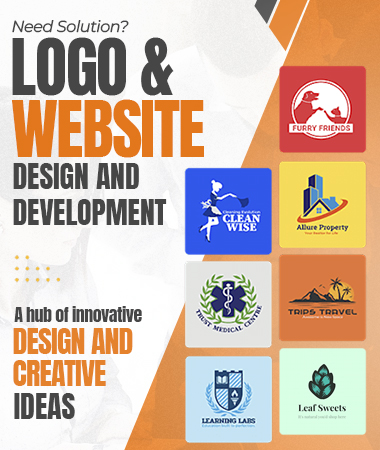How to Create a Client-Facing Testing Portal with Job-Fit Assessments?
Creating a client-facing testing portal with job-fit assessments involves developing a professional, secure, and intuitive web platform where employers and clients can evaluate candidates’ compatibility with specific job roles. Whether you’re working with a custom website development strategy or using a cheap website development deal, the goal is to deliver a unified experience that supports efficient hiring decisions through interactive and reliable assessments.
Define the Purpose and User Journey
Before development begins, clearly outline the platform's objective. The core idea is to provide an online space where clients can log in, send assessment links to job candidates, view real-time results, and generate reports. Understanding the journey of all user types—clients, candidates, and admins—is crucial. This initial mapping ensures the website development service supports smooth navigation and reduces confusion during usage.
Develop a Secure Client Login and Dashboard
Security is critical when handling sensitive hiring data. Start with a secure login system that allows clients to access their personalized dashboard. From here, they should be able to assign assessments, monitor progress, and retrieve analytics. If you’re looking to buy website development service that meets enterprise-level needs, this is a key feature to prioritize. Ensure encryption protocols and two-factor authentication are part of your build for full data protection.
Design Job-Fit Assessment Modules
The heart of the portal is the job-fit assessment engine. These modules can include personality tests, skill-based questions, logic problems, or behavioral assessments. The front-end design should offer a smooth, distraction-free test-taking experience. Implement timers, progress bars, and a clear layout to maintain candidate focus. For unique website development, tailor assessment templates for different industries or job roles, and allow customization for specific client needs.
Automate Scoring and Report Generation
Automated scoring saves time and enhances credibility. As soon as a candidate finishes the test, the system should evaluate answers and generate a comprehensive report. This report could include percentage match scores, skill breakdowns, and hiring suggestions. Integrating these features into your best website development help ensures the portal delivers instant, data-backed insights that clients can use immediately.
Integrate Branding and Client Personalization
To make the experience professional and personalized, allow each client to add their own branding—such as logos, colors, and email templates. A branded client portal strengthens trust and reflects a company’s identity, aligning with brand identity design best practices. This level of customization is essential in premium custom website development projects but can also be implemented effectively in more affordable website development help packages.
Enable Real-Time Notifications and Communication
Clients should receive real-time updates via email or dashboard notifications whenever a candidate completes an assessment. Consider adding live chat support or feedback channels so that users can communicate with the development team or HR support. These features enhance user experience and demonstrate the value of a well-built website development service online.
Ensure Performance, Compatibility, and Accessibility
Your platform must perform reliably across different browsers and devices. Responsive design ensures candidates can complete assessments on desktops, tablets, or smartphones without issues. Additionally, accessibility features such as text-to-speech compatibility, color contrast options, and keyboard navigation expand usability for a diverse user base—showcasing a thoughtful, inclusive website development service.
Conclusion
Building a client-facing testing portal for job-fit assessments combines clean design, secure architecture, and powerful functionality. From developing custom assessment modules and automating reports to offering client branding and real-time updates, every element should be designed to streamline the hiring process. Whether you’re pursuing custom website development or opting for a cheap website development deal, the focus remains on creating a high-performance, easy-to-use platform that adds real value to your clients’ recruitment efforts.
Related Blogs
- How Can I design Custom Logos?
- How to Design Logo in Adobe Illustrator?
- Use AI Chatbots for Logo Design
- Native Digital Marketing Tips
- Testing Process for Digital Marketing Campaigns
- How to Integrate Stock Photos in Logo Design?
- Follow the New 2024 Trend in Website Design: A + I
- Avoid Overlapping Elements in Logo Design
- Tips for Link Building in Logo Design Services Online
- Web Application Interfacing with OpenLLM features
- Give Tips for Amazon Listing Optimization Digital Marketing
- How to Customize Logo from a Library of Logo Designs?
- How to Use Boostrap in Modren and Trendy Website Development
- What Is Online Shopping Order Management Website?
- What New Banner Ad Designs Are Introduced in 2024?
- How to Differentiate Design of a Home Page and Inner Pages in a Website Design
- How to Create Print Ready Artwork Files with Graphic Designing?
- Skills needed by an UGC Creator / Influencer Outreach Manager
- Skills Needed for a Logo Illustrator
- How Digital Marketing Drives Conversions: Strategies and Case Studies
- Guide for Chrome Extension for Solve Bug with Shadow Root
- Guide About Website Design with Zoho Integration
- Best Website Design Software Available Online for Free
- How to Deal with Troublesome Third Party Issue in Website Development
- How to Avoid Wrong Color Contrast in Custom Website Design
- How to Create a Client-Facing Testing Portal with Job-Fit Assessments?



